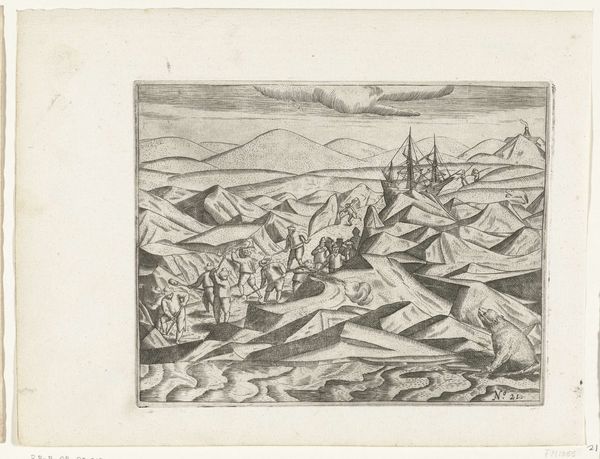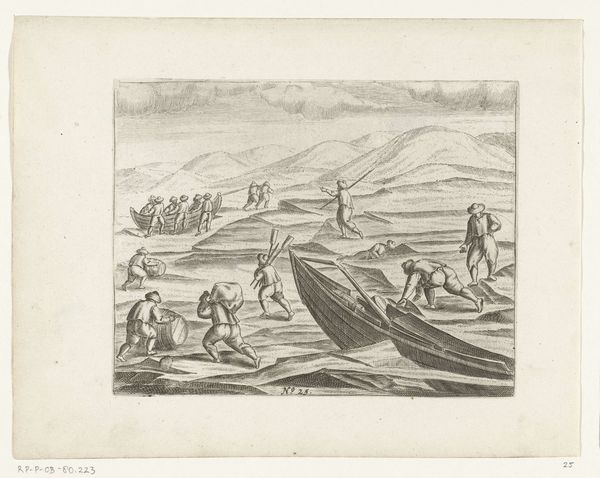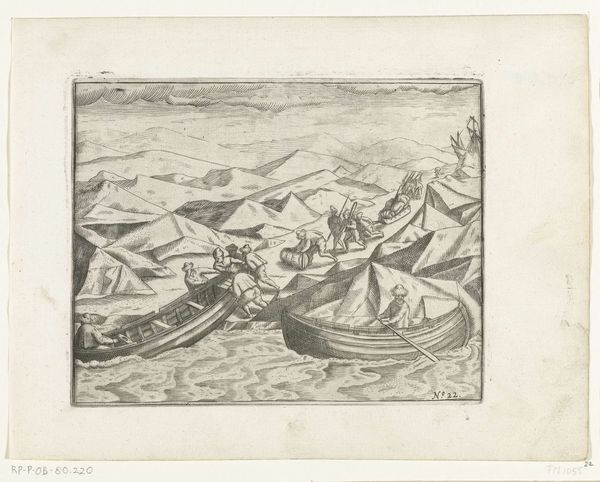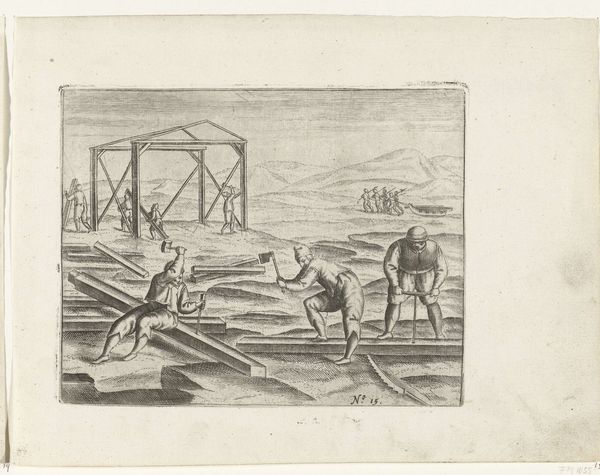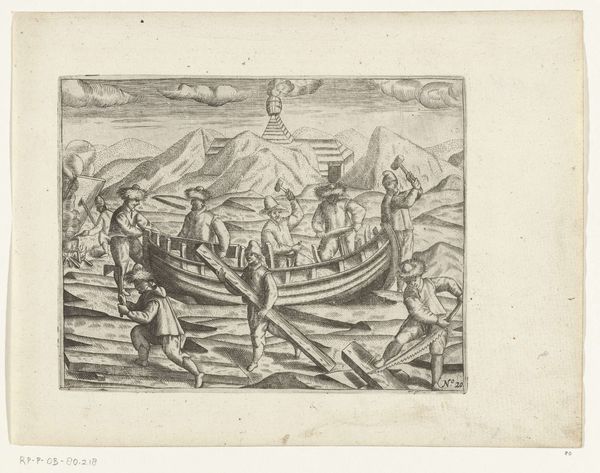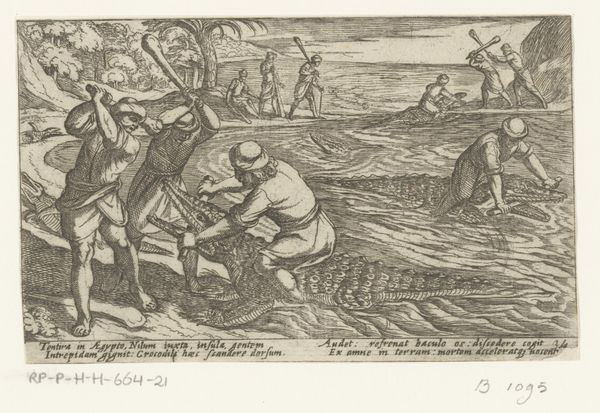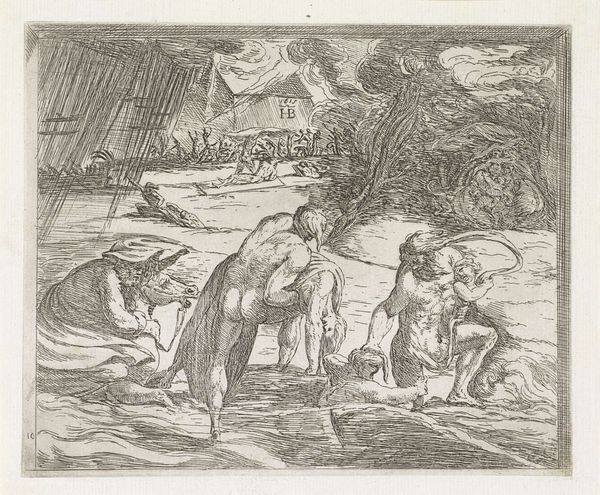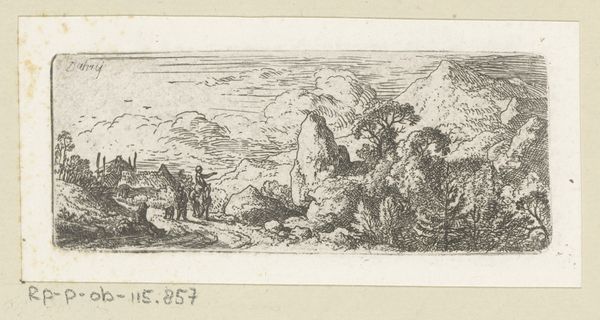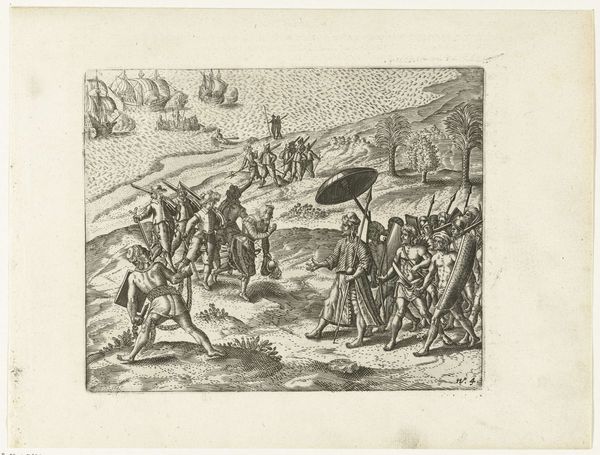
Slepen van hout op sleden naar de plaats waar het huis gebouwd wordt, 1596 1615 - 1617
0:00
0:00
anonymous
Rijksmuseum
print, engraving
#
narrative-art
# print
#
pen sketch
#
landscape
#
figuration
#
line
#
northern-renaissance
#
engraving
Dimensions: height 140 mm, width 172 mm
Copyright: Rijks Museum: Open Domain
Editor: Here we have an engraving entitled "Slepen van hout op sleden naar de plaats waar het huis gebouwd wordt, 1596" – that’s "Dragging wood on sleds to the place where the house is being built" – dating from 1615-1617. It's by an anonymous artist, held here at the Rijksmuseum. The composition feels very linear and descriptive, like a detailed record of an event. How do you interpret this work through its form? Curator: Indeed. We can immediately note the prevalence of line, creating a structured, almost diagrammatic depiction of space and action. Consider how the artist uses hatching and cross-hatching. Where do your eyes go and why? Editor: They’re drawn to the group of figures hauling the wood. The lines seem denser there, creating more visual weight. But then I notice the ship. Its placement seems... odd. Curator: Precisely. The relationship between foreground and background elements presents a fascinating tension. The ship's isolation and high placement disrupt the naturalistic perspective one might expect. What effect does this create? How does it impact the surface plane? Editor: It flattens the space, making the ship seem almost pasted onto the landscape, which enhances the somewhat artificial feeling, right? Like the whole image is a constructed scene. Curator: Precisely. And what might this "constructed scene" convey? The emphasis shifts away from the realistic portrayal of an event and towards the symbolic or allegorical. The materiality of the print itself becomes significant; it is not trying to replicate reality but to present an idea, meticulously etched onto the surface. The relationship between the ship, figures, building all suggest a controlled artistic vision, where line dominates and structure becomes meaning. Editor: That’s a very interesting take! I see how focusing on the formal qualities really opens up new ways to understand the image. Curator: By engaging with form, we’ve explored questions of meaning-making inherent within artistic representation, thereby transcending a purely mimetic function. A useful reminder in art history, wouldn't you agree?
Comments
No comments
Be the first to comment and join the conversation on the ultimate creative platform.

